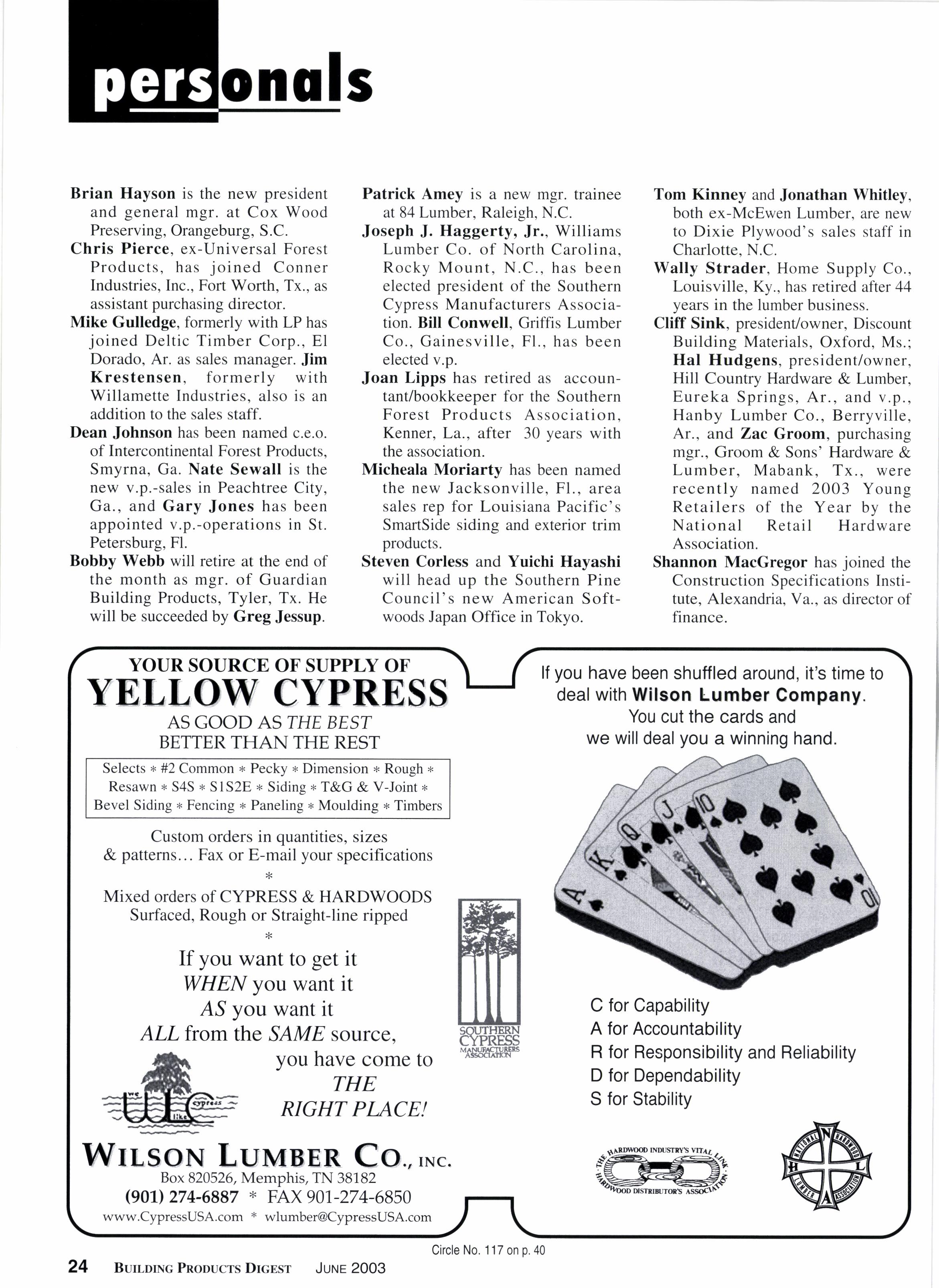
1 minute read
H ardwood solutions fo r cos t-conscious cus to mers
l\TO ONE would argue that homeI \ owners and builders aren't drawn to hardwood. Their beauty is unmistakable. Yet perceptions about high costs often dampen enthusiasm. It's here that dealers need to step in with creative solutions to make hardwood projects affordable.
Many customers are attracted to the look of cherry, maple and walnut, yet nervous about price. To overcome this anxiety, dealers should suggest alternative species and the use of finishes.
Many lighter hued, close-grained hardwoods can be stained to resemble their more expensive hardwood cousins.
Oak is also a great solution; it's abundant and affordable. and can be used in millwork applications such as crown mouldings, recessed ceiling panels, and door and window trim.
Another strategy for allaying fears is to suggest mixing and matching different hardwoods.
Hardwood floors, for example, don't need to be 100Vo oak or maple. A skillful mix of one or more species delivers a signature look that gives each floor its own identity.
With this method, the grain patterns and colors of each hardwood species not only add visual interest, but allow builders to mix woods at different price points, lowering the overall project cost.
In addition to floors, this strategy also works with railings, wainscoting and other millwork applications. Although the "clearest" grades are often the most sought after and the most expensive, they are not necessarily the best choice for a particularjob.
In many cases the natural streaks, swirls and knots of other grades offer attractive natural signatures for cabinets, floors and built-ins.
Lower-grade hardwoods are the best choice for cabinet sides and interior shelves that are not visible, and for wood that will be painted.
Hardwood floors
don't need to be 100% oak or maple; a skillful mix delivers a signature look.
Another economical approach to hardwood is plain-sawn lumber. This method produces the "flame shaped" or "cathedral" grain that is characteristic of most hardwood flooring and millwork, without the high cost.
Custom crown moulding and millwork is always popular, and having stock mouldings is one way to satisfy budget tastes. Custom looks can be achieved by joining several complementary stock profiles to create a unique product.
On an elaborate crown moulding, for example, this "stacking" strategy can save several thousand dollars. With more than 350 standard profiles, there are endless moulding combinations.
To further save your customers money, stock abundant species like poplar and sell it with a cherry or walnut finish. This can reduce materials costs by upto6O7o.










